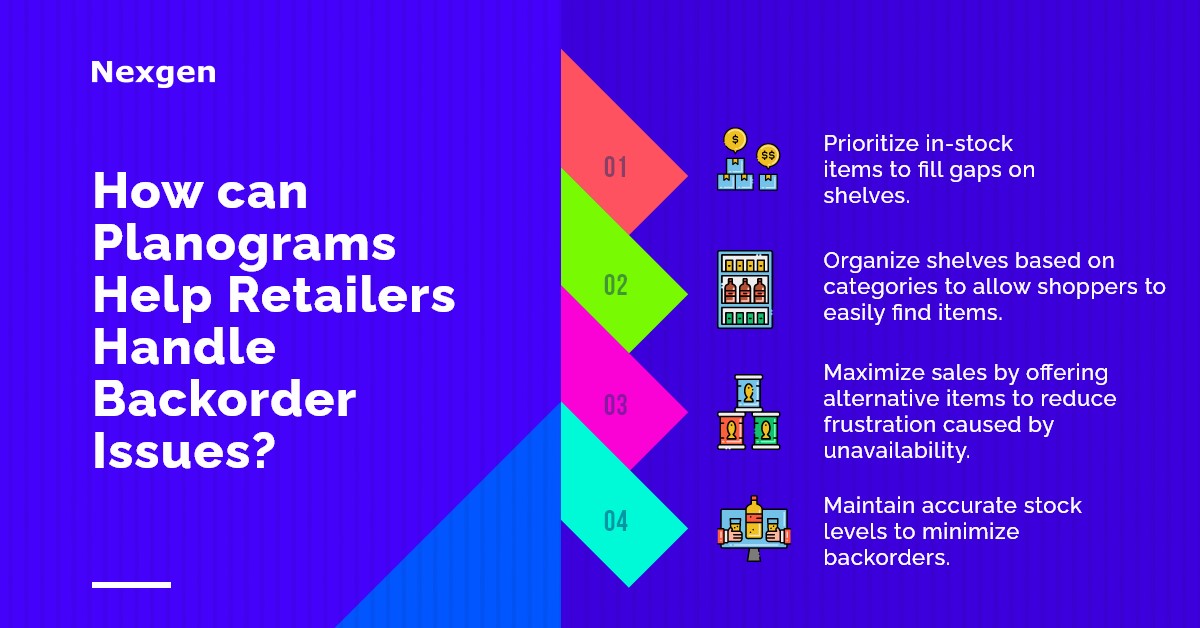Imagine you have a well-received product that sells off your shelves rapidly! flies off your shelves! So much so that each time you restock, you sell it straight through your inventory. While this is good news for your store (since it indicates that your products are in high demand), it is sad news for shoppers. Backordered items can make your shoppers wait longer since the product they want to purchase is currently out-of-stock. Waiting for a product can easily turn an excited shopper into a frustrated one. This leads customers to purchase similar items or visit other stores. For example, a shopper goes to a retail store to get a pair of shoes that he has had his eyes on for quite some time. However, the shoes are not available in the store at present. The customer can ask for help from the store staff to check the product’s availability. As a retailer, you cannot always control the supply chain since it breaks down easily, depending on changes in demand and market trends. But how can you anticipate demand and order enough stock? To simplify the stock management process, the right amount of inventory is always ensured by analyzing past sales data or days of supply in the form of shelf management software, such as planograms.
What are Backorders?
Backorders in retail stores refer to the situation where a product is currently out-of-stock or unavailable and the store orders it. This means that they order it from the supplier or manufacturer and restock the shelf as soon as the product becomes available. Planograms are an effective tool for retailers to manage backorder issues. A planogram is a visual representation or diagram that outlines the arrangement and placement of products in a retail store. By optimizing shelf space, prioritizing in-stock items, identifying inventory gaps, and streamlining the ordering process, retailers can ensure that they are meeting customer demands and maximizing sales opportunities. Here are some ways planograms can help handle backorder issues:

- Prioritize in-stock items: With a planogram, retailers can identify which items are out of stock and prioritize in-stock items to fill those gaps. By rearranging the shelves and highlighting the available products, you can ensure that customers are aware of the items that are available for purchase, reducing the frustration of not being able to find what they came for. This allows retailers to strategically position products on store shelves based on their popularity, demand, and availability. By analyzing sales data and customer preferences, you can ensure that high-demand items are readily available, reducing the likelihood of backorders. This helps retailers streamline the ordering process by providing a clear picture of what products are selling well and which ones are not. This allows retailers to adjust their orders accordingly and ensure that they are not overordered or underordered.
- Optimize shelf space: Retailers can make the most of their shelf space to ensure that they are able to showcase all available products in a way that is easy for customers to navigate. By organizing the shelves based on product categories and popularity, it will allow customers to find what they need quickly and easily. When customers encounter backorders, it can result in dissatisfaction and a negative shopping experience. With the help of planograms, retailers can proactively manage backorders by offering alternatives, suggesting similar products, or notifying customers of estimated restock dates. This helps maintain customer satisfaction and loyalty. For example, if you are an electronic store retailer, you will stock the newly launched phones because of their high demand. If the phone is on backorder, you can mention the availability of the product on labels. By regularly reviewing planograms, retailers can quickly identify when inventory levels are running low, allowing them to reorder products before they run out completely. This helps to avoid backorder issues and ensures that customers are always able to find the products they need.
- Cross-merchandise items: Planograms provide insights into complementary products or substitutes that can be positioned near items that are on backorder. This allows retailers to maximize sales opportunities by guiding customers towards alternative options, reducing frustration associated with unavailability. By incorporating real-time inventory data into planograms, retailers can quickly identify which products are on backorder. This visibility enables them to allocate space on shelves for alternative products or suggest suitable substitutes to customers, minimizing the impact of backorders on sales.
- Efficient stock replenishment: Retailers can determine the optimal quantities to order for each product based on past sales data and market demand. By maintaining accurate stock levels and minimizing excess inventory, retailers can reduce the occurrence of backorders. You can share planograms with suppliers to provide a visual representation of shelf arrangements and space allocation. By sharing information about backorder issues and potential alternatives, retailers can collaborate with suppliers to expedite restocking and find solutions that mitigate the impact of backorders.
Overview of Nexgen POG
Nexgen POG is a robust and user-friendly cloud-based visual merchandising tool. It is designed for quick and efficient planogramming with minimal effort. Planogram in retail can be designed by easily dragging and dropping the products. The multi-device compatibility feature of POG allows you to obtain, share and edit planogram on any device, including your phone. It helps in designing store-specific planograms for increased product visibility and sales.
Get Your Free Trial Now!